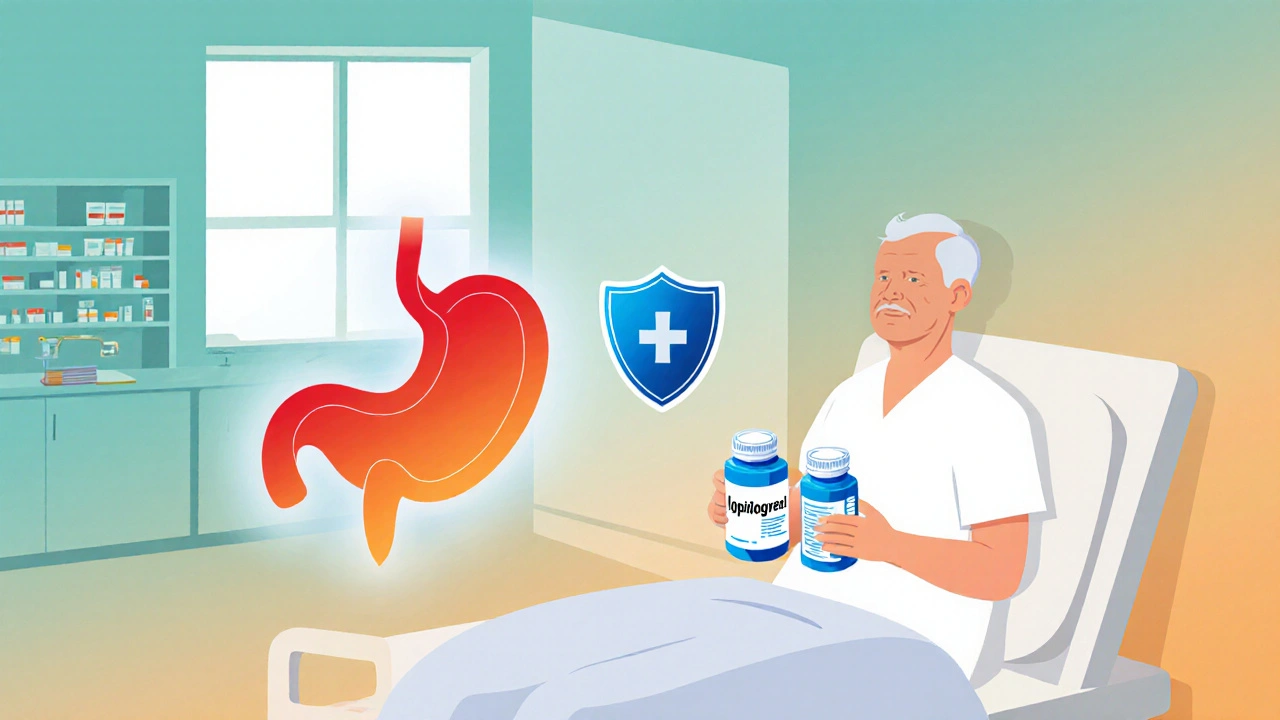Learn how adding a proton pump inhibitor to dual antiplatelet therapy reduces GI bleeding risk, which PPIs to choose, dosing guidelines, and future alternatives.
GI Bleeding: Causes, Diagnosis, and Management
When dealing with GI bleeding, bleeding that originates anywhere in the gastrointestinal tract, from the mouth to the rectum. Also known as gastrointestinal hemorrhage, it can range from a hidden drop in stool to a life‑threatening gush. A major trigger is NSAIDs, non‑steroidal anti‑inflammatory drugs that irritate the stomach lining, which damage the protective mucus and raise ulcer risk. GI bleeding often hides behind peptic ulcer disease, a sore in the stomach or duodenum that can erode blood vessels. When an ulcer perforates or a vessel ruptures, blood pours into the lumen, producing the classic signs of melena or hematemesis. Understanding these links helps clinicians anticipate who’s most at risk and act before the bleed becomes critical.
Diagnosing the source quickly is vital, and that’s where endoscopy, a visual examination of the interior of the GI tract using a flexible camera shines. An upper endoscopy can spot a bleeding ulcer, varices, or erosive gastritis within minutes, allowing the doctor to apply clips, inject vasoconstrictors, or perform cautery on the spot. If the bleed is lower, a colonoscopy serves the same purpose. In severe cases, the loss of blood volume demands immediate replacement, and blood transfusion, the infusion of packed red cells to restore oxygen‑carrying capacity becomes the cornerstone of stabilizing the patient. While transfusions address the symptom, they don’t stop the bleed; that’s why they’re paired with endoscopic therapy, proton‑pump inhibitors, and, when needed, angiographic embolization.
Beyond acute care, long‑term strategies focus on eliminating the root cause. Discontinuing or substituting NSAIDs with acetaminophen, initiating a proton‑pump inhibitor regimen, and eradicating H. pylori infection dramatically cut recurrence rates. Patients with cardiovascular disease may need to balance antiplatelet therapy against bleeding risk, often guided by a gastroenterology‑cardiology team. Lifestyle tweaks—avoiding alcohol, quitting smoking, and managing stress—add extra layers of protection. Below you’ll find a curated set of articles that break down each of these pieces: from how specific drugs like ranolazine or diacerein influence bleeding risk, to detailed guides on endoscopic techniques and post‑procedure care. Dive in to see practical advice, drug comparisons, and step‑by‑step management plans that will help you or your patients stay ahead of GI bleeding.

